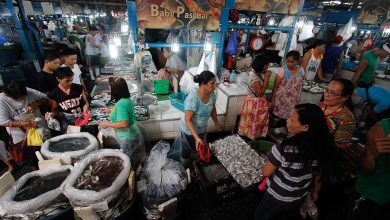Factory output picks up in January

MANUFACTURING OUTPUT picked up in January to its fastest pace in four months, the Philippine Statistics Authority (PSA) reported on Thursday.
Preliminary data from the PSA’s Monthly Integrated Survey of Selected Industries (MISSI) showed factory output, as measured by the volume of production index (VoPI), rose by 1.9% annually, faster than 1.6% in December.
However, this was slower than 7.3% in January 2023.
The sector’s output has been in positive territory for 19 straight months.
January’s VoPI growth was the fastest since 9.3% in September.
Month on month, manufacturing’s VoPI grew by 1.7%, a turnaround from the 6.7% drop in December. Stripping out seasonality factors, output fell by 0.3% from 0.1% growth the previous month.
In comparison, S&P Global Philippines Manufacturing Purchasing Managers’ Index (PMI) slid to 50.9 in January from 51.5 in December. A PMI reading above 50 shows improvement in operating conditions, while a reading below 50 shows the opposite.
Analysts attributed the year-on-year slowdown to the decline in the heavily weighted food manufacturing and base effects.
“The slowdown may be traced to the drop off in food manufacturing, which does account for a sizable portion of total manufacturing,” ING Bank N.V. Manila Senior Economist Nicholas Antonio T. Mapa said in an e-mail.
Food manufacturing’s VoPI contracted by 4.7% in January, the 11th straight month of decline. This was worse than the 4.3% drop in December and a reversal of 6.4% growth a year earlier.
The food products index accounted for 18.7% of manufacturing activity.
“This could be due to a combination of factors, including a higher base for comparison in 2024 due to strong performance in the previous year, ongoing geopolitical tensions impacting supply chains, and other potential factors like rising interest rates and labor shortages,” Security Bank Corp. Chief Economist Robert Dan J. Roces said in an e-mail.
In a phone interview, Philippine Exporters Confederation, Inc. (Philexport) President Sergio R. Ortiz-Luis, Jr. said he expected bigger growth in the manufacturing sector, but it was affected by geopolitical tensions.
The PSA said the growth in VoPI for January might be due to a slower annual drop in the manufacture of computer, electronic and optical products to 7.1% in January from 16.5% in December.
“The slower decline in electronics and optical products bodes well as this will likely translate to a gradual improvement in our electronics exports, although we remain cautious given the still soft global demand picture for basic electronic items,” Mr. Mapa said.
The PSA said the top three industry divisions that contributed to VoPI growth were coke and refined petroleum products (32% in January from 37.8% in December); fabricated metal products, except machinery and equipment (11.5% from -11.7%); and electrical equipment (10.5% from 40%).
Average capacity utilization — the extent industry resources are used in producing goods — averaged 74.5% in January, up from 74.4% in December and 73% a year earlier.
All industry divisions reported capacity utilization rates above 50%, with basic pharmaceutical products and pharmaceutical preparations reporting the slowest rate at 55%.
“We can expect manufacturing to possibly face challenges in the first half due to the potential impact on food items, and in turn food manufacturing, due to the El Niño weather phenomenon,” Mr. Mapa said.
He added that a rebound is likely in the second half as food production normalizes and demand for electronics improves. — Karis Kasarinlan Paolo D. Mendoza




